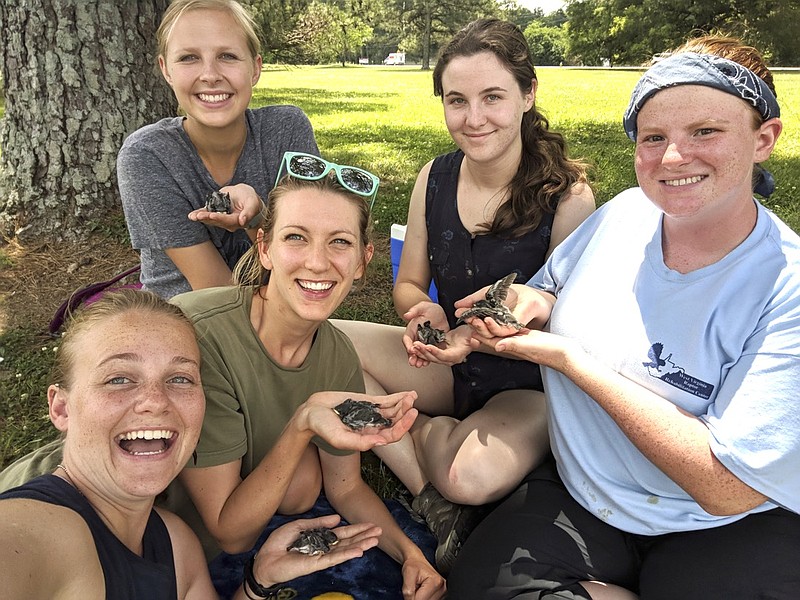Only about four inches long and weighing less than an ounce, tree swallows are delicate creatures.
Yet they are also amazing aerialists, sometimes gathering by the thousands into balletic flocks that dip and swirl as they migrate from north to south and back again.
Importantly, tree swallows can also tolerate human touch. In trained hands, the little birds can be cradled and banded without trauma, experts say.
Laura Marsh, a field biologist and adjunct professor at the University of Tennessee at Chattanooga, has been part of a group here studying the migration patterns of tree swallows.
This summer, Marsh, along with other faculty and students at UTC, tracked the swallows, who have been lured here with strategically placed nesting boxes - think of them as tiny boutique hotels for birds.
The effort is part of a nationwide push by Cornell University's Lab of Ornithology to determine, among other things, if tree swallows could contribute to better understanding of climate science.
There's something about holding a small bird, Marsh said, that bonds you with nature.
"When I first handled birds, I realized [field biology] was the field I wanted to go into," she said. "Something shifted inside me, and I felt like I wanted to help protect nature."
Climate can affect birds in many ways, Marsh said. Whether it's being blown off course by a hurricane, or, more subtly, having their reproductive patterns altered by longer, warm-weather seasons.
Researchers here noticed that some tree swallows in Tennessee, the southernmost site in the Cornell study, were having two brooding periods per season instead of one. An extended, warm-weather season here is believed to be the cause.
Interestingly, this could benefit the species, said Dr. David Aborn, UTC associate professor of biology, geology and environmental science.
"... Under normal circumstances it [double-brooding] would be neutral," Aborn said. "However, we are starting to see some declines in some tree swallow populations, so having places where the swallows are producing extra young could wind up having a positive effect."
The tree swallow research here wrapped up in the summer but continues in other parts of the United States, Aborn said.
"The Chattanooga portion of the project is finished," he explained. "Around mid-June, the crew left to get the Wyoming part of the project started. While the swallows here were finishing raising their first set of chicks, nesting was just getting started out there."
View other columns by Mark Kennedy
Meanwhile, Marsh has moved onto field work in coastal Alabama.
In an interview last week, Marsh said North America's migratory birds were on her mind as Hurricane Florence pummeled the Mid-Atlantic Coast.
"It [a hurricane] can really be disruptive for birds," she said. "This is a huge migration time for many species. ... When a hurricane disrupts their migration, they can get blow off track by thousands of miles."
Fortunately, nature helps lost birds recalibrate their destination - like the GPS-based navigation system on your automobile corrects when you make a wrong turn.
Meanwhile, the study of birds actually helps amplify our humanity, Marsh said.
"If you are looking at a bird outside your window, or feeling its heart beat in your hands, you realize how fragile life can be," she observed.
Contact Mark Kennedy at mkennedy@timesfreepress.com or 423-757-6645.

